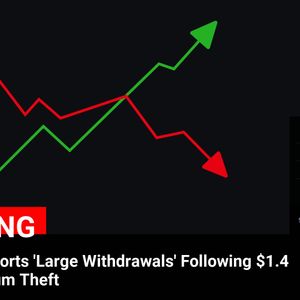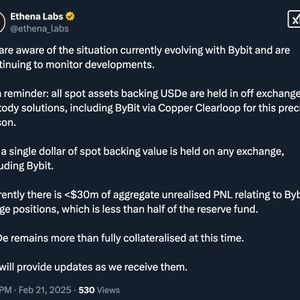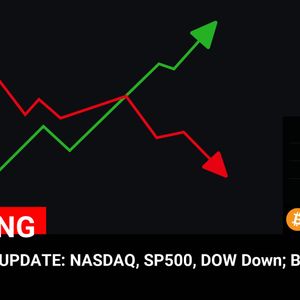Cryptocurrency markets are closely watching traditional finance, and recent geopolitical developments are sending ripples across both spheres. The US Dollar is experiencing a notable surge, fueled by unexpected headwinds in US-Russia relations and cautious market sentiment. This article delves into the factors driving this US Dollar Strength , exploring the implications of stalled peace talks and the shadow of potential Trump Tariffs . Why is US Dollar Strength Surging? Russia’s Cold Water on Trump’s Peace Hopes The US Dollar Index (DXY), a key metric reflecting the dollar’s value against six major currencies, has jumped above 107.00. This upward movement is primarily attributed to disappointing news emerging from Riyadh, where US and Russian officials convened to discuss the Russia Ukraine Conflict . Initial reports indicate that Russia is not keen on a swift meeting between President Trump and President Putin, citing unresolved demands. This development has dampened hopes for a quick resolution to the ongoing conflict, injecting uncertainty into the market. Here’s a breakdown of the key factors contributing to the dollar’s ascent: Geopolitical Uncertainty: Stalled progress in US-Russia talks is breeding risk aversion. Investors are flocking to safe-haven assets like the US Dollar amid escalating uncertainty. Diminished Peace Hopes: The initial optimism surrounding potential peace negotiations has faded, replaced by concerns of prolonged conflict. This shift in sentiment favors the dollar. Safe-Haven Demand: In times of global unease, the US Dollar traditionally benefits from its safe-haven status. The current geopolitical climate is reinforcing this trend. Market Risk Sentiment Shifts to Risk-Off The market’s reaction to the news from Riyadh has been swift and decisive. A clear shift towards a risk-off sentiment is evident. Investors are moving away from equities and into safer assets. Gold, US bonds, and the US Dollar are all gaining traction as traders seek shelter from potential market volatility. This flight to safety underscores the market’s anxiety regarding the protracted Russia Ukraine Conflict and its broader economic ramifications. Consider these indicators of the risk-off shift: Equity Markets: Equities are trading flat to marginally green, indicating a lack of strong bullish momentum and underlying caution. Bond Yields Rise: The US 10-year Treasury yield is ticking higher, reflecting increased demand for safe-haven government bonds. CME FedWatch Tool: While still showing a near 50% chance of unchanged interest rates in June, any escalation in geopolitical risk could influence future rate expectations and further bolster the dollar. Economic Indicators in Focus: Empire State and Housing Data Beyond geopolitics, the US economic calendar is also playing a role in shaping the dollar’s trajectory. Today’s focus is on key economic indicators , including the New York Empire State Manufacturing Index and the NAHB Housing Market Index. Here’s what to watch out for: New York Empire State Manufacturing Index (February, 13:30 GMT): Expectations are for a contraction in manufacturing activity, but at a slower pace than in January (-1 expected vs. -12.6 prior). A better-than-expected reading could further support the dollar. NAHB Housing Market Index (February, 15:00 GMT): Anticipated to show a slight improvement to 47 from 47 in January. Positive housing data can also contribute to dollar strength. Federal Reserve Speakers (15:20 GMT & 18:00 GMT): Speeches from Fed officials Daly and Barr will be closely scrutinized for any hints about future monetary policy and the Fed’s outlook on the economy. The Wild Card: Trump Tariffs and Geopolitical Landscape Adding another layer of complexity is the potential impact of Trump Tariffs . President Trump’s stated intention to impose tariffs, particularly on imports from Mexico, China, and Canada, is looming over the market. These potential tariffs introduce both economic and geopolitical uncertainties that could further influence the US Dollar. Tariffs FAQs: Understanding the Basics To better understand the potential impact of tariffs, let’s address some frequently asked questions: Question Answer What are tariffs? Customs duties on imported goods, designed to protect domestic industries. Tariffs vs. Taxes? Tariffs are on imports, paid at entry; taxes are on domestic transactions, paid at purchase. Are tariffs good or bad? Debated topic; proponents see protection, opponents see higher prices and trade wars. Trump’s Tariff Plan? Focus on tariffs to support US economy, targeting Mexico, China, Canada, using revenue for tax cuts. US Dollar Index Technical Outlook From a technical perspective, the US Dollar Index (DXY) is at a crucial juncture. The previous support level at 107.35 has now become resistance. Further upside targets include the 55-day SMA at 107.92 and then 108.00. Conversely, downside support levels to watch are 106.52, 106.45 (100-day SMA), and 105.89. The RSI suggests potential for further downside, with the 200-day SMA at 104.94 as a possible longer-term target. The technical outlook remains uncertain, heavily influenced by ongoing geopolitical and economic developments. Conclusion: Navigating Dollar Volatility The US Dollar Strength is currently being propelled by a confluence of factors: disappointing news from US-Russia talks, a resulting risk-off market sentiment, and the looming specter of Trump Tariffs . While economic indicators will provide further clues, the geopolitical landscape remains the dominant driver. Cryptocurrency traders and investors should closely monitor these developments, as fluctuations in the US Dollar can have significant implications across various asset classes. The coming days promise to be crucial in determining the dollar’s next direction. To learn more about the latest Forex market trends, explore our articles on key developments shaping US Dollar and other major currencies.



















